A
Auto Express
Guest
Few global car companies are quite as determined to go their own way as Mazda. The Japanese brand has carved out a reputation over the years for being unafraid to push the boundaries when it comes to developing innovative technologies and pioneering new models.
And as the company celebrates its centenary – having been founded, believe it or not, as a synthetic cork manufacturer in 1920 – now seems like an appropriate time to pay tribute to some of its significant successes.
Over the following pages, we’ve picked out 10 cars that demonstrate how the Hiroshima-based outfit has consistently punched above its weight on the global car market. In addition we’ve chosen four models that might be less familiar, but illustrate that Mazda has never been afraid to be different.
Agree or disagree with our selections? Let us know via the usual channels.
Mazda MX-5

image

image

image

image

image

image

image

image

image

image
Thirty-one years on from the launch of the first-generation MX-5 at the 1989 Chicago Auto Show, it’s impossible to overstate the influence of this roadster. Arriving during a particularly fallow period for affordable sports cars, it signalled the rebirth of the roadster, sparking a slew of imitators, and went on to record a million sales – over four generations – by 2016. In hindsight it seems astonishing that its simple formula of reduced mass and 50:50 weight distribution, inspired by British sports cars of the fifties and sixties, was such a revelation at the time. This car reminded the world that keeping things simple could deliver a life-affirming drive.
Mazda 787B

image

image

image

image

image

image

image

image

image

image
For such a relatively small company in global terms, Mazda has had some major successes to shout about in motorsport. Arguably none is more impressive than its victory at the 1991 Le Mans 24 Hours, when the four-rotor-engined 787B took the chequered flag in the hands of Britain’s Johnny Herbert (alongside Bertrand Gachot and Volker Weidler).
It was a remarkable win; at the time, the 787B was the first non-piston-engined car to triumph at Le Mans, and nobody in attendance will ever forget the unique sound the rotary power delivered. The fact that Mazda was the first Japanese company to win Le Mans – and the only one until Toyota in 2018 – added to its significance.
Eunos Cosmo

image

image

image

image

image

image

image

image

image

image
You may not have heard of the Eunos Cosmo, but you should have. Developed in the late eighties, this gigantic 2+2 coupé was intended as Mazda’s flagship: the finest rotary car ever created.
It featured a groundbreaking engine; a twin-turbo triple rotor – the only one to make production – and a smoothness that Mazda claimed was on a par with a V12. The lucky few who have driven one say the ride is comparable to a Rolls-Royce’s, and with pioneering tech for the era such as GPS and a touchscreen, it was the essence of luxury. But then the Japanese economy failed, so the plug was pulled with only a few thousand built.
Mazda 323 AWD

image

image

image

image

image

image

image

image

image

image
As well as victory at Le Mans (opposite), there was further significant motorsport success in the World Rally Championship, which Mazda competed in from 1985 to 1991.
The rear-wheel-drive Group B RX-7 finished on the podium in the 1985 Acropolis Rally, but it was the Group A 323 AWD that left an indelible mark. While the car’s 1.6-litre turbocharged engine was underpowered compared to its 2.0-litre turbo rivals, the 323 handled exceptionally, and claimed its first victory in the 1987 Swedish Rally in the hands of Timo Salonen. Ingvar Carlsson took further wins in Sweden and New Zealand in 1989.
Cosmo Sport

image

image

image

image

image

image

image

image

image

image
The technology that has defined Mazda over its first 100 years is unquestionably the rotary engine. Smaller and lighter than a traditional piston engine – and with a superior power-to-weight ratio – it’s an ideal solution for sports cars.
And so it proved with the 1967 Cosmo Sport, which was Mazda’s first model to use Felix Wankel’s unique powerplant. The coupé boasted beautiful lines and was a dream to drive, being characterised by the engine’s distinctive howl. Only 1,200 were made and just a handful sold outside Japan, and this rarity is reflected in its value now – we found only two decent examples for sale in the UK, with prices starting at £70,000.
R360 Coupe

image

image

image

image

image

image

image

image

image

image
Mazda's first-ever passenger vehicle was a game changer in its native Japan when it launched in 1960. Innovative technology was at the R360’s core, with a 16bhp four-stroke engine, rather than the two-stroke units that were common in its rivals. It also used a significant amount of magnesium alloy in its construction to reduce weight.
A hugely fashionable design and a lower price than competitors ensured it became a smash hit with an upwardly mobile Japanese population. The R360 is still held in high esteem at Mazda, and was used as design inspiration for the brand’s recently announced centenary special editions.
Rotary Pickup

image

image

image

image

image

image

image

image

image

image
Unlike other Japanese brands, Mazda has little pick-up pedigree in the UK, but it’s a different story elsewhere. One of the more notable is the Rotary Pickup (or Repu), sold in the US and Canada in the early seventies. It had a 110bhp Wankel engine, and as the only rotary pick-up ever made, is coveted by collectors.
Mazda RX-7

image

image

image

image

image

image

image

image

image

image
While most observers would consider the MX-5 to be Mazda’s signature car, for some the model that sets the benchmark is the RX-7.
It sold more than 800,000 examples across three generations between 1978 and 1992 – the company’s first mass-production sports car and the best-selling rotary-engined model ever. The first generation was an iconic design, blending smart coupé styling with a wedge-shaped front. But it was how it drove that was a revelation, with the front mid-engined layout delivering near-perfect weight distribution.
Arguably the best remembered version is the Mk3 FD (above), a 236bhp twin-turbo thriller that delivered exquisite handling and 0-62mph in just 5.2 seconds.
Autozam AZ-1

image

image

image

image

image

image

image

image

image

image
A Japan-only Kei car launched in 1992 under the Autozam sub-brand, the AZ-1 had unforgettable styling and featured extraordinary gullwing doors. It was designed by some of the team behind the original MX-5, but it struggled for sales due to a higher price than its rivals, the Honda Beat and Suzuki Cappuccino.
Mazda Bongo

image

image

image

image

image

image

image

image

image

image
Ignore the ludicrous name – this was a practical minivan that gained respect over multiple generations, particularly the Friendee motorhome version in the UK. The Bongo Sky Lounge (below) featured a solar-powered ventilation system via panels on the roof.
Mazda RX-8

image

image

image

image

image

image

image

image

image

image
The most recent model to be powered by a rotary engine; will it be the last? In many ways the RX-8 – sold between 2004 and 2012 – captured perfectly the pros and cons of Mazda’s signature technology.
On the plus side, the RX-8 was a dream to drive, with a joyful, high-revving 1.3-litre two-rotor engine, a balanced chassis and steering that provided exceptional feedback. The fact the four-door, four-seat coupé looked so good was a bonus.
But the RX-8 proved to be a high-maintenance partner; a number of reliability issues, excessive oil consumption and unpalatable running costs put many off.
MAZDA-GO

image

image

image

image

image

image

image

image

image

image
The company’s first-ever vehicle, launched in 1931, was a three-wheeled auto-rickshaw that was used by farmers and small businesses. Various versions followed, and Mazda three-wheelers were used extensively in the rebuild of Hiroshima after WWII.
Mazda 323

image

image

image

image

image

image

image

image

image

image
Building great small family cars has always been a Mazda forte and that continues to this day, with the current Mazda 3 nominated in the final three of the 2020 World Car of the Year.
This tradition can be traced back decades to the Familia of 1964, but arguably the most notable entrant in this class was the first-generation 323. The rear-wheel-drive hatch was developed relatively quickly in response to the oil crisis of the early seventies, and arrived in 1977. It sold strongly across the world and became a hit in the US, where it was modestly marketed as the GLC, or Great Little Car.
Mazda CX-5

image

image

image

image

image

image

image

image

image

image
As with many companies, Mazda has embraced the SUV phenomenon with relish. Across the globe, it currently sells the CX-3, CX-30, CX-4, CX-5, CX-8 and CX-9, with the electric MX-30 on its way and another new crossover planned for the US, too. But while acknowledging the trailblazing role played by the ahead-of-its-time CX-7 in 2006, Mazda’s current SUV success can trace its lineage back to the first CX-5, which arrived in 2012.
It heralded the introduction of the brand’s much-lauded Kodo – Soul of Motion – design language and also its innovative Skyactiv tech, which reduced emissions without compromising driving dynamics. The CX-5 set a high bar for mainstream compact SUVs as a keen driving machine.
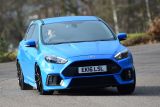
Ford Focus RS
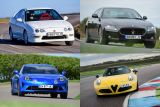
Future Classics - header

Toyota Yaris GRMN

Alfa Romeo 4C
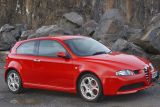
Alfa Romeo 147 GTA
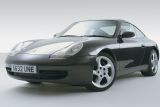
Porsche 911 996 Carrera

Citroen C4 Cactus
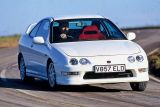
Honda Integra Type R DC2
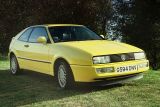
Volkswagen Corrado
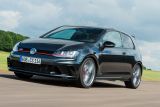
Volkswagen Golf GTI Clubsport S
Continue reading...
And as the company celebrates its centenary – having been founded, believe it or not, as a synthetic cork manufacturer in 1920 – now seems like an appropriate time to pay tribute to some of its significant successes.
Over the following pages, we’ve picked out 10 cars that demonstrate how the Hiroshima-based outfit has consistently punched above its weight on the global car market. In addition we’ve chosen four models that might be less familiar, but illustrate that Mazda has never been afraid to be different.
Agree or disagree with our selections? Let us know via the usual channels.
Mazda MX-5

image

image

image

image

image

image

image

image

image

image
Thirty-one years on from the launch of the first-generation MX-5 at the 1989 Chicago Auto Show, it’s impossible to overstate the influence of this roadster. Arriving during a particularly fallow period for affordable sports cars, it signalled the rebirth of the roadster, sparking a slew of imitators, and went on to record a million sales – over four generations – by 2016. In hindsight it seems astonishing that its simple formula of reduced mass and 50:50 weight distribution, inspired by British sports cars of the fifties and sixties, was such a revelation at the time. This car reminded the world that keeping things simple could deliver a life-affirming drive.
Mazda 787B

image

image

image

image

image

image

image

image

image

image
For such a relatively small company in global terms, Mazda has had some major successes to shout about in motorsport. Arguably none is more impressive than its victory at the 1991 Le Mans 24 Hours, when the four-rotor-engined 787B took the chequered flag in the hands of Britain’s Johnny Herbert (alongside Bertrand Gachot and Volker Weidler).
It was a remarkable win; at the time, the 787B was the first non-piston-engined car to triumph at Le Mans, and nobody in attendance will ever forget the unique sound the rotary power delivered. The fact that Mazda was the first Japanese company to win Le Mans – and the only one until Toyota in 2018 – added to its significance.
Eunos Cosmo

image

image

image

image

image

image

image

image

image

image
You may not have heard of the Eunos Cosmo, but you should have. Developed in the late eighties, this gigantic 2+2 coupé was intended as Mazda’s flagship: the finest rotary car ever created.
It featured a groundbreaking engine; a twin-turbo triple rotor – the only one to make production – and a smoothness that Mazda claimed was on a par with a V12. The lucky few who have driven one say the ride is comparable to a Rolls-Royce’s, and with pioneering tech for the era such as GPS and a touchscreen, it was the essence of luxury. But then the Japanese economy failed, so the plug was pulled with only a few thousand built.
Mazda 323 AWD

image

image

image

image

image

image

image

image

image

image
As well as victory at Le Mans (opposite), there was further significant motorsport success in the World Rally Championship, which Mazda competed in from 1985 to 1991.
The rear-wheel-drive Group B RX-7 finished on the podium in the 1985 Acropolis Rally, but it was the Group A 323 AWD that left an indelible mark. While the car’s 1.6-litre turbocharged engine was underpowered compared to its 2.0-litre turbo rivals, the 323 handled exceptionally, and claimed its first victory in the 1987 Swedish Rally in the hands of Timo Salonen. Ingvar Carlsson took further wins in Sweden and New Zealand in 1989.
Cosmo Sport

image

image

image

image

image

image

image

image

image

image
The technology that has defined Mazda over its first 100 years is unquestionably the rotary engine. Smaller and lighter than a traditional piston engine – and with a superior power-to-weight ratio – it’s an ideal solution for sports cars.
And so it proved with the 1967 Cosmo Sport, which was Mazda’s first model to use Felix Wankel’s unique powerplant. The coupé boasted beautiful lines and was a dream to drive, being characterised by the engine’s distinctive howl. Only 1,200 were made and just a handful sold outside Japan, and this rarity is reflected in its value now – we found only two decent examples for sale in the UK, with prices starting at £70,000.
R360 Coupe

image

image

image

image

image

image

image

image

image

image
Mazda's first-ever passenger vehicle was a game changer in its native Japan when it launched in 1960. Innovative technology was at the R360’s core, with a 16bhp four-stroke engine, rather than the two-stroke units that were common in its rivals. It also used a significant amount of magnesium alloy in its construction to reduce weight.
A hugely fashionable design and a lower price than competitors ensured it became a smash hit with an upwardly mobile Japanese population. The R360 is still held in high esteem at Mazda, and was used as design inspiration for the brand’s recently announced centenary special editions.
Rotary Pickup

image

image

image

image

image

image

image

image

image

image
Unlike other Japanese brands, Mazda has little pick-up pedigree in the UK, but it’s a different story elsewhere. One of the more notable is the Rotary Pickup (or Repu), sold in the US and Canada in the early seventies. It had a 110bhp Wankel engine, and as the only rotary pick-up ever made, is coveted by collectors.
Mazda RX-7

image

image

image

image

image

image

image

image

image

image
While most observers would consider the MX-5 to be Mazda’s signature car, for some the model that sets the benchmark is the RX-7.
It sold more than 800,000 examples across three generations between 1978 and 1992 – the company’s first mass-production sports car and the best-selling rotary-engined model ever. The first generation was an iconic design, blending smart coupé styling with a wedge-shaped front. But it was how it drove that was a revelation, with the front mid-engined layout delivering near-perfect weight distribution.
Arguably the best remembered version is the Mk3 FD (above), a 236bhp twin-turbo thriller that delivered exquisite handling and 0-62mph in just 5.2 seconds.
Autozam AZ-1

image

image

image

image

image

image

image

image

image

image
A Japan-only Kei car launched in 1992 under the Autozam sub-brand, the AZ-1 had unforgettable styling and featured extraordinary gullwing doors. It was designed by some of the team behind the original MX-5, but it struggled for sales due to a higher price than its rivals, the Honda Beat and Suzuki Cappuccino.
Mazda Bongo

image

image

image

image

image

image

image

image

image

image
Ignore the ludicrous name – this was a practical minivan that gained respect over multiple generations, particularly the Friendee motorhome version in the UK. The Bongo Sky Lounge (below) featured a solar-powered ventilation system via panels on the roof.
Mazda RX-8

image

image

image

image

image

image

image

image

image

image
The most recent model to be powered by a rotary engine; will it be the last? In many ways the RX-8 – sold between 2004 and 2012 – captured perfectly the pros and cons of Mazda’s signature technology.
On the plus side, the RX-8 was a dream to drive, with a joyful, high-revving 1.3-litre two-rotor engine, a balanced chassis and steering that provided exceptional feedback. The fact the four-door, four-seat coupé looked so good was a bonus.
But the RX-8 proved to be a high-maintenance partner; a number of reliability issues, excessive oil consumption and unpalatable running costs put many off.
MAZDA-GO

image

image

image

image

image

image

image

image

image

image
The company’s first-ever vehicle, launched in 1931, was a three-wheeled auto-rickshaw that was used by farmers and small businesses. Various versions followed, and Mazda three-wheelers were used extensively in the rebuild of Hiroshima after WWII.
Mazda 323

image

image

image

image

image

image

image

image

image

image
Building great small family cars has always been a Mazda forte and that continues to this day, with the current Mazda 3 nominated in the final three of the 2020 World Car of the Year.
This tradition can be traced back decades to the Familia of 1964, but arguably the most notable entrant in this class was the first-generation 323. The rear-wheel-drive hatch was developed relatively quickly in response to the oil crisis of the early seventies, and arrived in 1977. It sold strongly across the world and became a hit in the US, where it was modestly marketed as the GLC, or Great Little Car.
Mazda CX-5

image

image

image

image

image

image

image

image

image

image
As with many companies, Mazda has embraced the SUV phenomenon with relish. Across the globe, it currently sells the CX-3, CX-30, CX-4, CX-5, CX-8 and CX-9, with the electric MX-30 on its way and another new crossover planned for the US, too. But while acknowledging the trailblazing role played by the ahead-of-its-time CX-7 in 2006, Mazda’s current SUV success can trace its lineage back to the first CX-5, which arrived in 2012.
It heralded the introduction of the brand’s much-lauded Kodo – Soul of Motion – design language and also its innovative Skyactiv tech, which reduced emissions without compromising driving dynamics. The CX-5 set a high bar for mainstream compact SUVs as a keen driving machine.

Ford Focus RS

Future Classics - header

Toyota Yaris GRMN

Alfa Romeo 4C

Alfa Romeo 147 GTA

Porsche 911 996 Carrera

Citroen C4 Cactus

Honda Integra Type R DC2

Volkswagen Corrado

Volkswagen Golf GTI Clubsport S
Continue reading...
